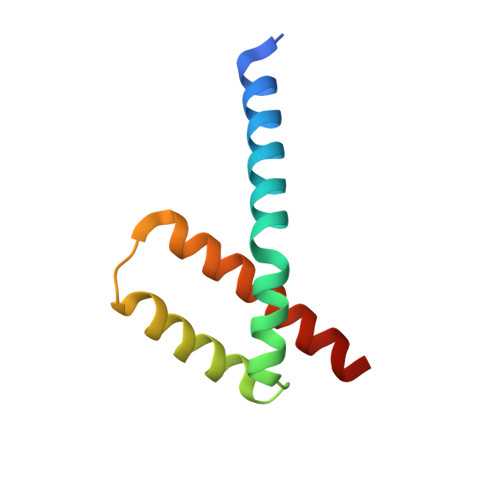BAK core dimers bind lipids and can be bridged by them.
Cowan, A.D., Smith, N.A., Sandow, J.J., Kapp, E.A., Rustam, Y.H., Murphy, J.M., Brouwer, J.M., Bernardini, J.P., Roy, M.J., Wardak, A.Z., Tan, I.K., Webb, A.I., Gulbis, J.M., Smith, B.J., Reid, G.E., Dewson, G., Colman, P.M., Czabotar, P.E.(2020) Nat Struct Mol Biol 27: 1024-1031
- PubMed: 32929280
- DOI: https://doi.org/10.1038/s41594-020-0494-5
- Primary Citation of Related Structures:
6UXM, 6UXN, 6UXO, 6UXP, 6UXQ, 6UXR - PubMed Abstract:
BAK and BAX are essential mediators of apoptosis that oligomerize in response to death cues, thereby causing permeabilization of the mitochondrial outer membrane. Their transition from quiescent monomers to pore-forming oligomers involves a well-characterized symmetric dimer intermediate. However, no essential secondary interface that can be disrupted by mutagenesis has been identified. Here we describe crystal structures of human BAK core domain (α2-α5) dimers that reveal preferred binding sites for membrane lipids and detergents. The phospholipid headgroup and one acyl chain (sn2) associate with one core dimer while the other acyl chain (sn1) associates with a neighboring core dimer, suggesting a mechanism by which lipids contribute to the oligomerization of BAK. Our data support a model in which, unlike for other pore-forming proteins whose monomers assemble into oligomers primarily through protein-protein interfaces, the membrane itself plays a role in BAK and BAX oligomerization.
- Walter and Eliza Hall Institute of Medical Research, Parkville, Victoria, Australia.
Organizational Affiliation:



















